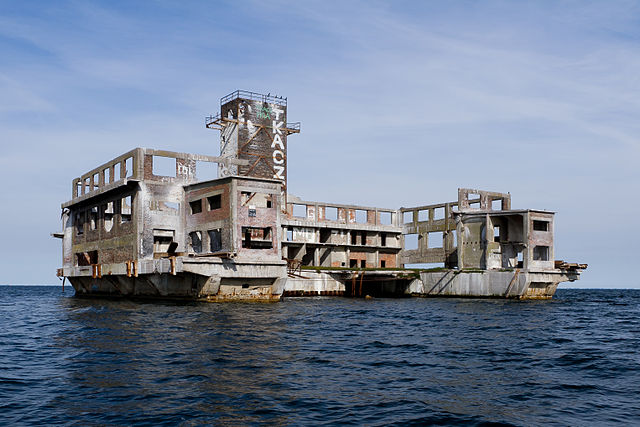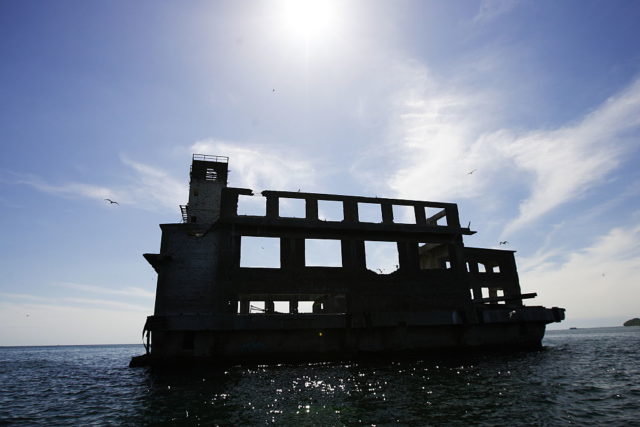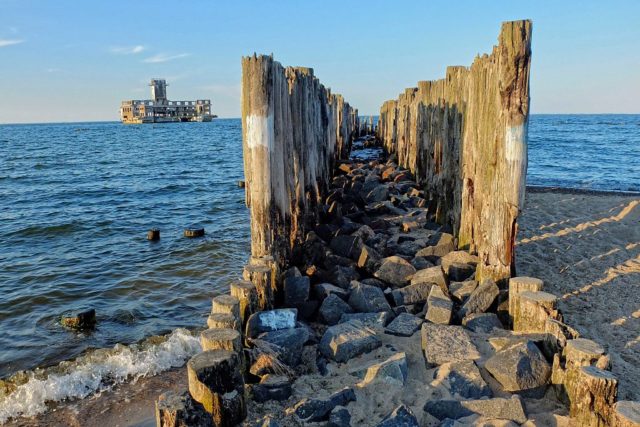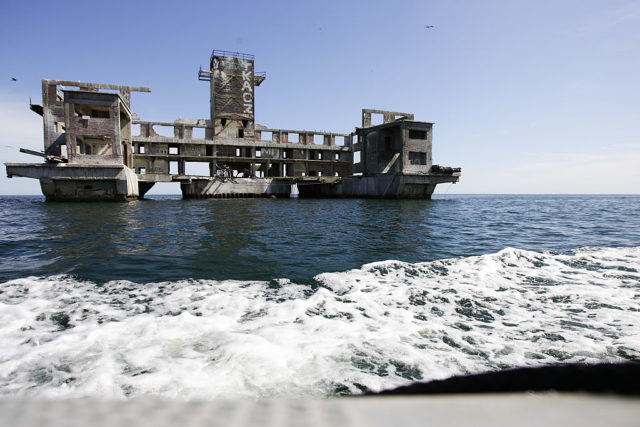Situated 1,000 feet off the picturesque coast of Gdynia, Poland lies the remnants of a bygone era – the former torpedo testing complex known as Torpedownia. This site, steeped in historical significance, was once referred to as Torpedowaffenplatz Hexengrund by the German military during World War II. It served as a pivotal hub for both the Kriegsmarine and the Luftwaffe, playing a vital role in the development and testing of torpedoes. Today, this decaying relic teeters on the brink of collapse, perched precariously above the azure waters below.
The onset of World War II in September 1939, marked by the German invasion of Poland, prompted an urgent need for self-reliance in torpedo technology. Prior to this, the German military had been reliant on torpedo imports from countries such as Italy and Japan. To address this vulnerability, the decision was made to establish a torpedo testing facility in the Bay of Puck, a western branch of the Bay of Gdańsk within the southern Baltic Sea.

Two distinct testing platforms were erected in close proximity to each other. The more renowned of the two was Torpedowaffenplatz Hexengrund, known as “Torpedownia” to the Polish. The second facility, known as Torpedo Versuchsanstalt Oxhôlt, was colloquially referred to as “Formoza” and was located just 4-5 kilometers away. These facilities operated independently, sharing the utilization of a training ground and connected by a railway that snaked along the beach.
Formoza served the Kriegsmarine’s torpedo testing needs, while Torpedownia was predominantly employed by the Luftwaffe. The latter boasted an impressive array of facilities, including a torpedo assembly hall, an observation and fire control tower, and two torpedo shafts from which torpedoes were launched for rigorous testing. A pier spanned the distance between the platform and the mainland, facilitating logistical operations.

Torpedownia played a pivotal role in the development and testing of aerial torpedoes, which were designed to be dropped from aircraft such as Junkers Ju 52, Heinkel He 111, and Focke-Wulf Fw 190. The German F5b model, in service from the latter part of 1941 until the war’s conclusion, utilized a wooden K3 tail for trajectory control during flight. These torpedoes could also be launched from E-boats, the nimble attack craft of the Kriegsmarine.
The assembly of these torpedoes involved transporting parts from the mainland to the facility via train. During the testing phase, these torpedoes were launched without live explosives, falling harmlessly into a net strategically placed between Torpedownia and Formoza.

As the Red Army swiftly advanced towards the region in March-April 1945, German forces evacuated Torpedownia and Formoza, leaving these facilities under Soviet control. The Soviets disassembled the technical equipment within the facilities, relocating them to the USSR. Regrettably, it appears that these components were never reassembled or used, marking the end of their operational life.
During their occupation of Torpedownia and Formoza, Soviet forces conducted military dive training and research activities. To deter unwanted visitors from crossing the bay to Torpedownia, the wooden pier was explosively demolished, with the remainder of its structure obliterated in the 1990s. Today, only the foundation of the pier stands as a testament to its former existence.

In contemporary times, Formoza sees recurrent use by the Polish military for specialized diver training, with the military’s special forces divers named after the defunct German facility (officially known as Jednostka Wojskowa Formoza). The headquarters of these elite units can be found in Gdynia.
Conversely, Torpedownia has largely been left to the ravages of time. Although it remains standing and is accessible to swimmers and boaters, it teeters on the edge of collapse. Visitors are advised to exercise caution when exploring this dilapidated platform, as it stands as a haunting relic of a tumultuous past, echoing the once-secretive world of torpedo testing during World War II.
Read Also: Abandoned Glass Mansion of Leesburg in Virginia
